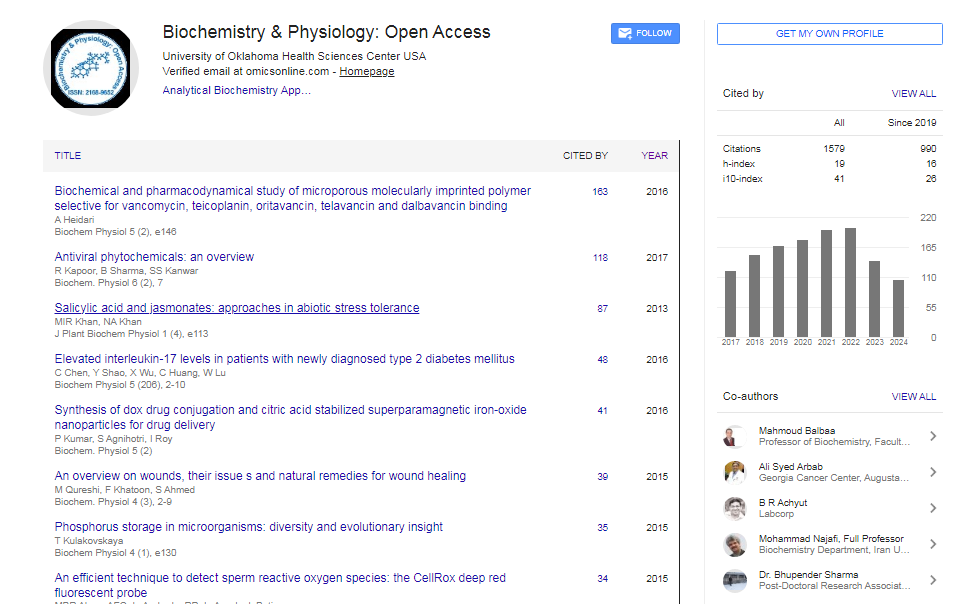Research Article
Pro-Oxidant and Inflammatory Mediators Produced In Transgenic Mice (App/ Ps1)
| Aguirre-Rueda D, Aldasoro M, Santonja S, Guerra S, Iradi A and Valles SL* | |
| Department of Physiology, Faculty of Medicine, University of Valencia, Blasco Ibañez, 15. 46010 Valencia, Spain | |
| *Corresponding Author : | Soraya L Valles, Ph.D. Department of Physiology, School of Medicine University of Valencia, Blasco Ibañez 15. 46010 Valencia, Spain Tel: 34-96-3983813 Fax: 34-96-3864642 E-mail: lilian.valles@uv.escom |
| Received November 16, 2013; Accepted December 16, 2013; Published December 20, 2013 | |
| Citation: Aguirre-Rueda D, Aldasoro M, Santonja S, Guerra S, Iradi A, et al. (2013) Pro-Oxidant and Inflammatory Mediators Produced In Transgenic Mice (App/Ps1) . Biochem Physiol 2:121. doi:10.4172/2168-9652.1000121 | |
| Copyright: © 2013 Aguirre-Rueda D, et al. This is an open-access article distributed under the terms of the Creative Commons Attribution License, which permits unrestricted use, distribution, and reproduction in any medium, provided the original author and source are credited. | |
Abstract
Amyloid precursor protein plus presenilin-1 (APP/PS1) transgenic mice are a frequently model for amyloid deposition studies in Alzheimer disease (AD). We determined gene expression in these transgenic mice by Westernblot technique. Protein expression was similar in both transgenic and wild type mice and also transgenic expression was similar in old and young mice. In mice with 12 months, transgenic animals developed cognitive dysfunction and reduced protein expression of several genes essentials in oxidative stress, such as MnSOD without changes in expression of Cu/ZnSOD protein. Also, we are unable to detect changes between wild type and transgenic mice for PPAR-γ antiinflammatory protein expression. Loss of neurons and synapses are contributing to the AD illness and here, we noted increased expression of AIF, contributing to the loss of neurons, astrocytes and probably synapses function inside the brain. Furthermore, we detect an increase in Sir-2 protein expression only significant in limbic brain area of APP/ PS1 mice compared with wild type mice, area first involved in AD patients. On the other hand, a reduction on p-53 protein expression is noted in all brain APP/PS1 areas compared to wild type mice. Our results demonstrate increase in pro-oxidant proteins and no changes in anti-inflammatory, with increase expression in HIF demonstrating increase in apoptosis in transgenic mice compared to wild type mice. All changes indicated loss of neurons and astrocytes with an unbalance between pro- and anti-oxidant proteins with induction of protecting proteins such as Sir-2 and reduction of p-53, which is normally increased in cancer cells.

 Spanish
Spanish  Chinese
Chinese  Russian
Russian  German
German  French
French  Japanese
Japanese  Portuguese
Portuguese  Hindi
Hindi 